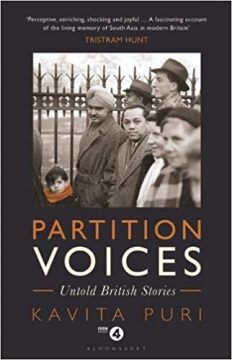John Keay at Literary Review:
 A Britain without the South Asian British is now almost unthinkable. With a few exceptions – farming, fishing and the armed forces spring to mind – there are few sectors of UK life where the descendants of South Asian immigrants are not prominent. Kavita Puri, for example, author of the harrowing Partition Voices, is a distinguished broadcaster whose father, Ravi, relocated from Delhi to Middlesbrough in 1959. The Puri family had lived originally in Lahore. But while the Puris were Hindu, the majority of Lahoris were Muslim. Under the terms of the 1947 partition plan, Lahore became part of Pakistan. The Puri family, in order to survive the carnage that ensued, had to flee across the border to the new Indian state, ending up in Delhi.
A Britain without the South Asian British is now almost unthinkable. With a few exceptions – farming, fishing and the armed forces spring to mind – there are few sectors of UK life where the descendants of South Asian immigrants are not prominent. Kavita Puri, for example, author of the harrowing Partition Voices, is a distinguished broadcaster whose father, Ravi, relocated from Delhi to Middlesbrough in 1959. The Puri family had lived originally in Lahore. But while the Puris were Hindu, the majority of Lahoris were Muslim. Under the terms of the 1947 partition plan, Lahore became part of Pakistan. The Puri family, in order to survive the carnage that ensued, had to flee across the border to the new Indian state, ending up in Delhi.
For Ravi, partition meant not one but multiple displacements, of which the move to Middlesbrough was just the last. To his daughter, it’s self-evident that ‘there is a link between partition and migration to Britain’, since it was those areas of India and Pakistan most affected by partition that became the major contributors to the flow of emigrants. But the chain of causation was not always so obvious. Of all the various South Asian communities in Britain today, the largest is that of Pakistanis from Punjab, who found work in the mill towns of Lancashire and Yorkshire in the 1960s.
more here.
